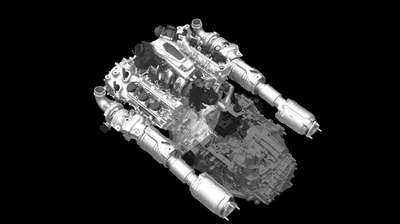An Analysis Of The Acura NSX That Proves It's Worthy Of That Iconic Nameplate

We’ve been waiting a long time for the new Honda NSX, and it’s finally here. To build up hype around its new sports car, Honda’s luxury vehicle arm in America has released in-depth technical details for some of its most innovative engineering features. Typically, manufacturers only give a basic overview of new technologies, so it’s great to be able to really delve into what makes the new NSX tick.
“Our goal is to create something altogether new and exciting, something that advances the concept of a next generation supercar in the spirit of the original NSX,” said Klaus. “In order to provide NSX-level value, we needed to push ourselves to experiment with, refine and then realise many new technologies.”
Ted Klaus, NSX chief engineer
We’ve fallen hook, line and sinker for Acura’s PR gimmick here, but we don’t even care. Feast your eyes on this lot…
Multi-material spaceframe

The NSX engineering team decided rigidity and lightweight design were at the core of what they wanted from the car’s structure. “We considered all-aluminum unibody, carbonfibre monocoque and space frame designs and ultimately engineered a multi-material space frame because it offers the lowest weight and best rigidity, precision and hybrid powertrain packaging capability of any design,” said Shawn Tarr, principal engineer and Acura NSX body development leader.
What this means is that Acura is confident the NSX’s body is ‘by far the most rigid in its competitive set’, while keeping the overall weight as low as possible. It also allowed designers to keep the high-strength steel A-pillar thin to improve visibility, by offering improved rigidity and safety with less material.
Ablation Casting

These are the points at which sections of the spaceframe cross paths or join up. While traditional casting techniques allow for a rigid frame, they have to be kept outside of crumple zones as they’re brittle. This new technique, which Acura claims is being used for the first time in the automotive industry here, involves rapid cooling techniques which ultimately combine traditional rigidity with energy absorption characteristics. This allows the castings to be placed within crumple zones, giving the designers more flexibility to position them optimally for performance.
Total Airflow Management

Computational fluid dynamics, wind tunnels and real-world testing all contributed to a new aerodynamic profile that provides minimum drag, maxiumum downforce, and maximum cooling to the engine and other mechanical parts. Engineers even used a virtual world with famous race tracks loaded in so they could constantly tweak air flow before applying it in the real-world.
In total, there are 10 air-cooled radiators. These cool the twin-motor unit at the front, 3.5-litre twin-turbo V6 engine (which has three radiators alone), direct-drive electric motor at the rear, and nine-speed dual clutch transmission. There are twin-intercoolers within the side intakes to cool the air flowing through the car.
The aerodynamic profile works without active aero by utilising all of the air that flows over, through, and out of the car. The rear diffuser is a unique design that has fins that do not run parallel to each other. Instead, they are narrower near the front of the car and wider at the rear, creating an area of low pressure to maximise downforce.
Sport-Hybrid SH-AWD Power Unit

The NSX’s power unit is a completely new hybrid setup, incorporating three electric motors and a longitudinally-mounted twin-turbo V6 mated to a new nine-speed DCT.
The 75-degree V-angle allows the engine to be dropped lower in the chassis, improving the car’s centre of gravity, while using a dry sump allows the engine to perform better under high lateral-G conditions.

The twin motor unit acts on the front axle via a set of planetary gears and each motor drives one wheel each, while the rear-mounted direct-drive motor sits between the engine and the gearbox, directly driving the rear axle. This improves responsiveness and gives immediate acceleration.

Naturally we’re incredibly excited about the return of a JDM icon, and with all this innovative technology it should be an absolute riot to drive. Unfortunately for most of us, it’s expected to be priced in the region of $150,000 (£98,000), so you’ll have to stump up supercar money for that supercar performance.













Comments
No comments found.